-
Product Name
INPP5E antibody
- Documents
-
Description
INPP5E Rabbit Polyclonal antibody. Positive WB detected in SH-SY5Y cells, HEK-293 cells, mouse brain tissue, mouse testis tissue. Positive IP detected in HEK-293 cells. Positive IF detected in hTERT-RPE1 cells. Positive IHC detected in human testis tissue, human brain tissue, human heart tissue, human kidney tissue, human ovary tissue, human placenta tissue, human spleen tissue. Observed molecular weight by Western-blot: 64-66 kDa
-
Tested applications
ELISA, WB, IHC, IF, IP
-
Species reactivity
Human,Mouse,Rat; other species not tested.
-
Alternative names
INPP5E antibody; PPI5PIV antibody
-
Isotype
Rabbit IgG
-
Preparation
This antibody was obtained by immunization of INPP5E recombinant protein (Accession Number: NM_019892). Purification method: Antigen affinity purified.
-
Clonality
Polyclonal
-
Formulation
PBS with 0.02% sodium azide and 50% glycerol pH 7.3.
-
Storage instructions
Store at -20℃. DO NOT ALIQUOT
-
Applications
Recommended Dilution:
WB: 1:500-1:5000
IP: 1:500-1:5000
IHC: 1:20-1:200
IF: 1:20-1:200
-
Validations
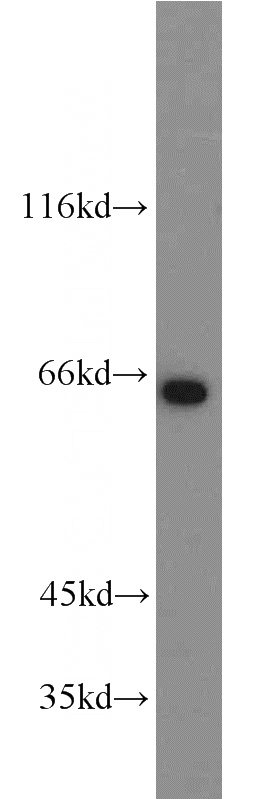
SH-SY5Y cells were subjected to SDS PAGE followed by western blot with Catalog No:111844(INPP5E antibody) at dilution of 1:1000
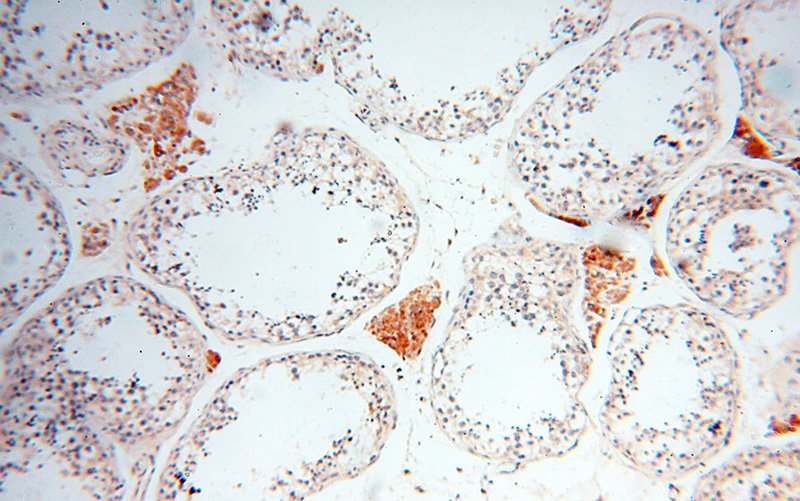
Immunohistochemical of paraffin-embedded human testis using Catalog No:111844(INPP5E antibody) at dilution of 1:50 (under 10x lens)
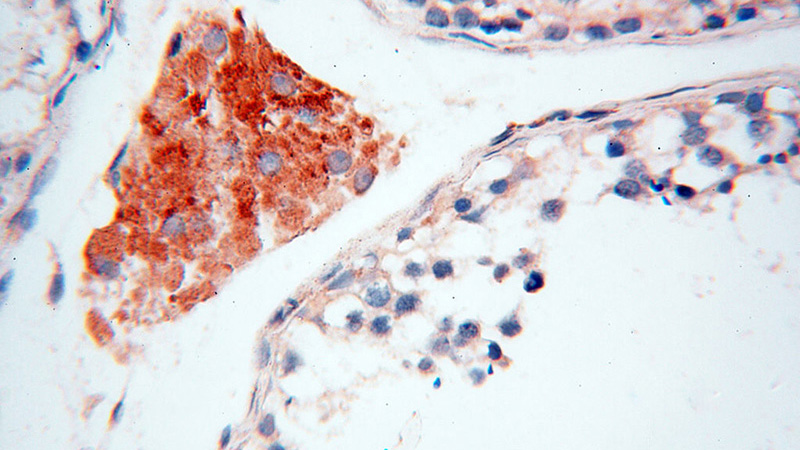
Immunohistochemical of paraffin-embedded human testis using Catalog No:111844(INPP5E antibody) at dilution of 1:50 (under 40x lens)
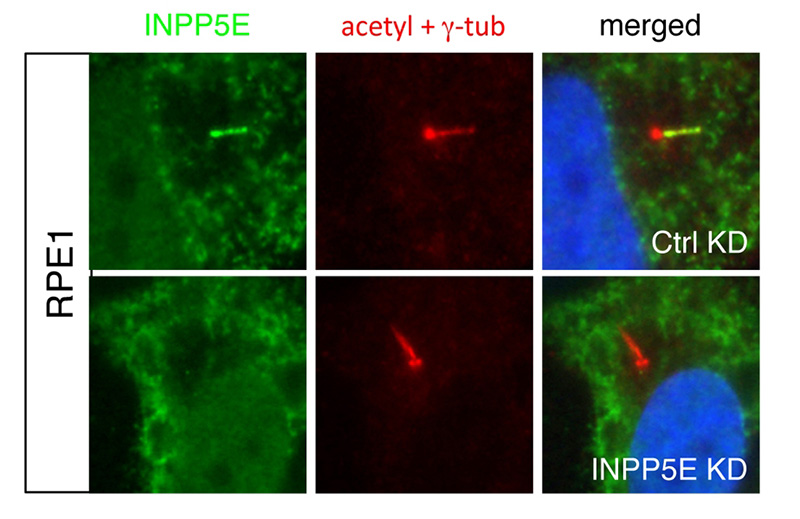
IF result of ciliary INPP5E in human hTERT-RPE1 cell: Upper is from control siRNA transfected cells and bottom is from INPP5E siRNA transfected cells. Catalog No:111844 specifically recognizes the ciliary INPP5E(From Dr.Seongjin Seo).
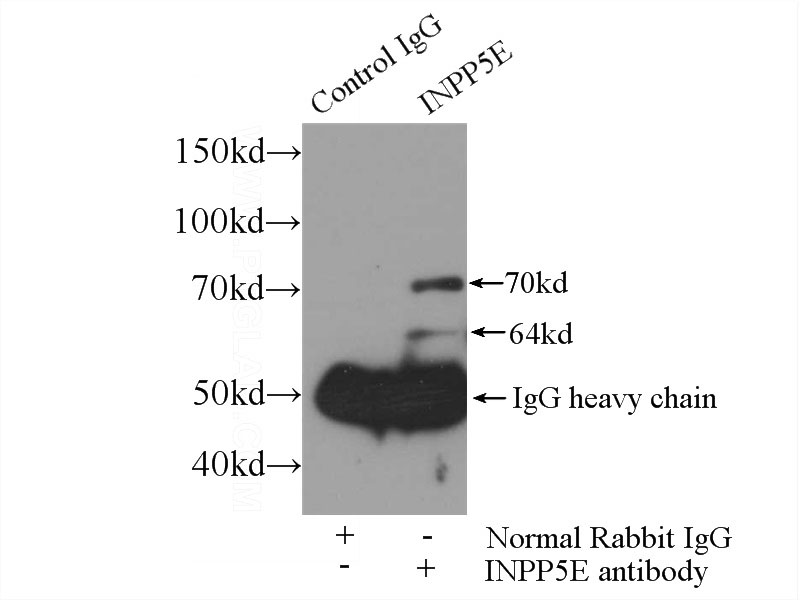
IP Result of anti-INPP5E (IP:Catalog No:111844, 3ug; Detection:Catalog No:111844 1:1000) with HEK-293 cells lysate 1000ug.
-
Background
INPP5E(72 kDa inositol polyphosphate 5-phosphatase) converts phosphatidylinositol 3,4,5-trisphosphate (PtdIns 3,4,5-P3) to PtdIns-P2.In mouse, highest protein expression was in brain, heart, and testis, with lower expression in thymus and lung, and very little expression in kidney, spleen, and liver(PMID:10764818). Defects in INPP5E are the cause of Joubert syndrome type 1 (JBTS1) and mental retardation-truncal obesity-retinal dystrophy-micropenis (MORMS)(PMID:19668215). It has 2 isoforms with the molecular mass of 66 kDa and 70 kDa.
-
References
- Humbert MC, Weihbrecht K, Searby CC. ARL13B, PDE6D, and CEP164 form a functional network for INPP5E ciliary targeting. Proceedings of the National Academy of Sciences of the United States of America. 109(48):19691-6. 2012.
- Plotnikova OV, Seo S, Cottle DL. INPP5E interacts with AURKA, linking phosphoinositide signaling to primary cilium stability. Journal of cell science. 128(2):364-72. 2015.
- Yang AW, Sachs AJ, Nystuen AM. Deletion of Inpp5a causes ataxia and cerebellar degeneration in mice. Neurogenetics. 16(4):277-85. 2015.
- Slaats GG, Isabella CR, Kroes HY. MKS1 regulates ciliary INPP5E levels in Joubert syndrome. Journal of medical genetics. 53(1):62-72. 2016.
- Thomas S, Wright KJ, Le Corre S. A homozygous PDE6D mutation in Joubert syndrome impairs targeting of farnesylated INPP5E protein to the primary cilium. Human mutation. 35(1):137-46. 2014.
Related Products / Services
Please note: All products are "FOR RESEARCH USE ONLY AND ARE NOT INTENDED FOR DIAGNOSTIC OR THERAPEUTIC USE"
